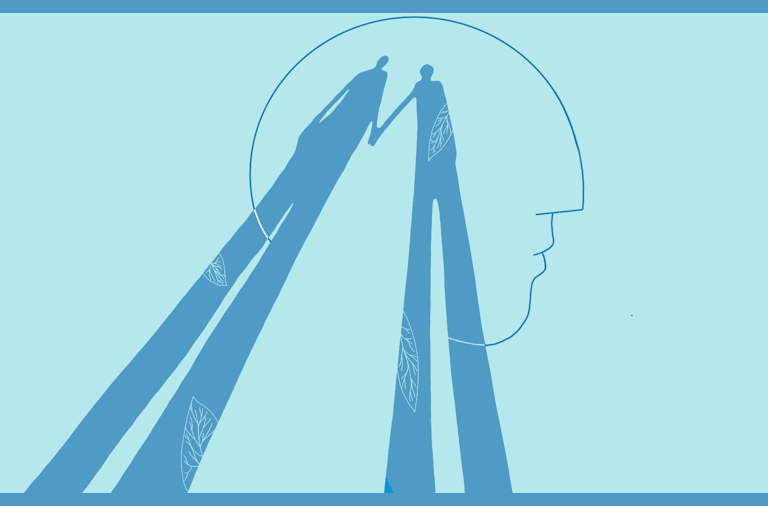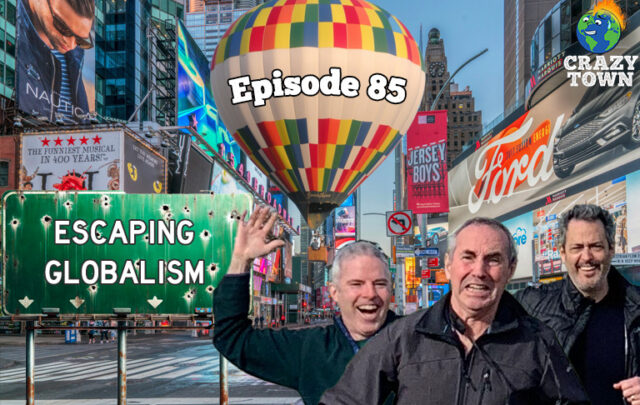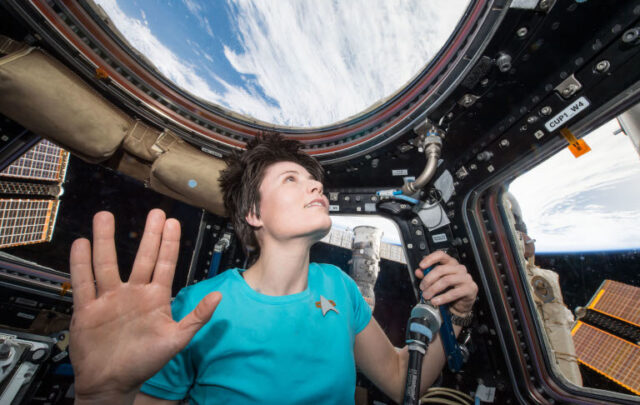NOTE: Images in this archived article have been removed.

Post Carbon Institute’s Associate Director Ken White recently visited Atamai Village, an evolving resilient community outside of Motueka, near the top of NZ’s South Island. Atamai, situated on 110 hectares (272 acres) of farm land and rolling hills, has plans to become a community of 2-300 people (15 families currently reside there), living amidst a small vineyard, orchard, cattle, sheep, goats, chickens, ponds, organic famland, a small forest, and other common spaces. A local Waldorf school appears likely to move to the Village center soon. The Atamai development process operates as a not for profit trust. Ken chatted with two of the early settlers, Jack and Joanna Santa Barbara.
KW: Jack and Jo, I understand you folks moved from a very comfortable and connected life in Canada to join this project almost from the start. Given that you were very active in your community, and have grandchildren back in Ontario where you’ve lived for many decades, I’m guessing this was not a quick or simple decision. Could you tell us how you came to this life-changing decision? What led you to make a leap of faith halfway across the globe?
 J&J:
J&J: We came to the realization that the global drivers of change, climate change and energy descent, were already affecting the way people live in various parts of the world, and would eventually affect everyone – no matter where they lived, no matter how well connected or wealthy they are, or how comfortable they are now, or what their expectations may be for the future.
This realization evolved over several years. Like most people, we were preoccupied with our careers and family, and in our case, environmental and peace activism. But it wasn’t until reading Herman Daly, the Meadows and William Catton that we came to realize that limits to growth was an important concept that wasn’t getting the attention it deserved. At first, this was a sort of conceptual awakening to the idea of limits, but it wasn’t until we looked into what was happening with climate change that we came to realize that humanity has already surpassed at least this one critical limit of dumping too many greenhouse gases into the atmosphere
Any serious look at climate issues quickly brings you to energy issues. Watching the “End of Suburbia,” and reading Richard Heinberg about energy descent, and then encountering Charlie Hall about net energy matters, it became pretty clear to us that human civilization was approaching a point of profound change. Joseph Taintner’s work on the collapse of civilzations was also an influence on our thinking. We pretty quickly realized that these global drivers would have profound social and economic impacts – for all the reasons that thinkers like Heinberg and Taintner have articulated.
There were, of course, many other thinkers and scientific reports and conferences that influenced our thinking. But basically it boiled down to the following:
- We live on a finite planet with finite resources
- Climate change is an example of breaching a global sink limit
- Energy descent is an example of breaching a global resource limit
- Our economic system drives greater consumption and breaching of biophysical limits
- Other vital limits are also being surpassed –such as biodiversity loss and loss of soil fertility
- Cheap energy is essential for continued economic growth
- Take economic growth out of the equation and the debt-based money system can no longer function as designed
- Technology is not the solution – it is part of the problem.
Taking these realities seriously shook us up quite a bit. The future was no longer about continued economic growth and the prosperity we anticipate and are part of. Suddenly we saw huge risks with no widely accepted solutions. In fact, the very institutions that we would like to have turned to for answers, governments and corporations, didn’t seem to be taking the risks seriously. Having been peace and environmental activists for decades, we realized that responses were going to have to come from the ground up, that corporations and governments were too committed to the Business As Usual model to get serious about actually making significant change.
This was a jolt to our sense of the way we should live. Previously, the required changes to our way of life always seemed too radical or inconvenient. But when we realized the future we expected was not the future we were likely to get, the required changes suddenly become more attractive.
We came to realize that we were going to pass on to our children and grandchildren risks and challenges they were totally unprepared for. We decided we had to make some radical changes if we were going to take our understanding of global change seriously, and just as an intellectual exercise. We decided to act.
KW: What led you to act in the way you did?
J&J: If you clue in to the kinds of dramatic changes that are coming with limits to growth, climate, energy, etc, you come to realize the personal consequences and implications:
- Meeting basic human needs will be increasingly challenging, because current mainstream systems for doing that are unsustainable and brittle
- Governments and technology are part of the Business As Usual paradigm, and are unlikely to generate or support useful responses to Business Unusual
- Old paradigms don’t change—they fade away, and are replaced by new paradigms
- Moving away from economic globalization requires a new paradigm: relocalization
- Relocalization means learning to be a producer of what you need and wish to consume
- An essential element of a relocalized new paradigm is a new kind of human settlement – a resilient community.
KW: So, this led you to the idea of living in a resilient community?
We saw the establishment of resilient communities as an essential component of a sustainable civilization – relocalizing globally. Starting from scratch made more sense to us than the alternatives: either attempting to modify existing communities (although we have great sympathy for and support Transition Town and other initiatives, and we try to learn from each other), or doing it on our own. Attempting to modify existing communities, as we experienced, essentially leaves you in your comfort zone with a project. We had tried that, and concluded we had to move out of our comfort zones to accomplish anything significant. Going it alone wasn’t really an option either, as too many skills and resources are needed to make the kinds of changes we felt were necessary. And we are social animals, so there is much joy and learning in working with others for a common cause.
Another line of thinking that brought us to a resilient community came from asking questions like:
- “What is most important to preserve, despite whatever changes come along?”
- “What kinds of resilience are most important?”
We realized that meeting basic needs may be threatened by the global drivers of change, so the answer to those questions seems pretty simple: ensure you are resilient in meeting your basic needs. These involve food, water, shelter, and social supports. That answer led us to another question:
- “How can we ensure that we can meet our basic needs?”
Our answer to that was pretty simple: Control the production of what we must consume. If we can do that, then we have the resources and space to do other things. If we cannot ensure basic needs, then we’d have to scramble to survive.
So for us, establishing a resilient community meant working with like-minded folks to ensure our basic needs. This might seem like a low target to aim for, but that is only because most of us take our basic needs for granted, and fail to appreciate that the current systems for meeting basic needs are unsustainable – meaning they cannot and will not continue in their present form. In fact, most of our current systems are part of the problem. To give just a few examples:
- Our food system consumes more energy than it produces.
- Many municipalities spend up to a third of their energy budget on moving water, and degrading it in the process.
- Many of our homes are too big and require too much energy to keep us comfortable.
- Most corporations draw down and degrade resources faster than they can be replenished
- Most people are not connected with their neighbours in a joint project for the common good.
We felt very inspired by the idea of making a serious attempt to meet these basic needs in a sustainable way. And we felt very fortunate in meeting others who were also inspired in this way.
KW: So why New Zealand? Why not do this in Canada, where you were established and had friends and family?
 J&J:
J&J: Once we set our sights on the importance of a resilient community we knew it wasn’t going to be a cakewalk. We asked ourselves where it would make the most sense in terms of being able to prove a concept, where it could succeed. Whenever you do something innovative you need to ensure the pilot will have the best chance to succeed, and then later you can always deconstruct it and clarify which bits were most important.
So we asked ourselves: “What minimal criteria should we consider in choosing a location”? We came up with a short list:
- A biocapacity excess, since we expected to rely more directly on Nature, and we wanted the Nature we relied on to be in good shape.
- A climate that did not require a lot of energy to stay comfortable, because why make things more difficult than they need to be?
- A government with at least some semblance of parliamentary democracy, because as Churchill noted, it’s the worst form of government…except when compared to all the others! [laughter]
A quick scan of the globe made us realize how few places on the planet meet even these simple criteria. Once identified we realized that New Zealand also had the benefits of being relatively isolated geographically (a potential safety feature in a time of mass migration). New Zealand is also the poorest of the OECD (Organisation for Economic Co-operation and Development) nations. That might seem like a strange feature to list as desirable, but to us, it meant a country with less physical infrastructure to maintain after energy descent, and a population accustomed to living well with less (both positive features). Plus, Joanna’s Australian citizenship made it easier for us to immigrate.
KW: It must have been tough to pull up stakes though….
J&J: We did not see this as establishing a bolt hole for ourselves, but rather as an opportunity to contribute to something worthwhile from which our children and grandchildren, as well as others, could benefit. Given that we were in our 60s when we made this move, we really didn’t see it as doing it just for ourselves. At our age it didn’t matter, and it would have been a lot easier to stay put. But being retired, we had the resources and energy to make the move.
Leaving friends and family was the most difficult part. We believe that if we can even partially succeed, then we can provide an example for many, and hopefully a healthy, sustainable place for the rest of our family.
KW: Why the village idea? Where did that come from?
J&J: Atamai was always conceived as an attempt to recreate a traditional village, even before we arrived. The idea resonated with us, as we realized that traditional villages have been the most common and enduring form of human settlement across continents and over millennia. Empires and civilizations may come and go, but villages are a constant. The key features of this place that jived with our notion of a resilient community, and that were built into Atamai were:
- Some shared common land that was jointly owned and managed.
- Largely living off the energy flows of the land (i.e. soil, sun, water, wind).
- A village economy where people exchange basic goods and services with each other and the surrounding areas.
- Some shared values and traditions.
When we saw that these features were built into the Atamai design, and that permaculture principles were also integrated, we felt the project merited serious consideration. An extended site visit, and lots of family discussions over a few months, led to our decision to give it a go.
KW: How are permaculture features incorporated into the Village?
 J&J:
J&J: Permaculture is about design to ensure abundance, shaping Nature to support human needs as well as enriching herself. Some of the main permaculture features at Atamai include:
- All building sites are situated for passive solar designs and personal gardens.
- Dwellings use non-toxic local materials, are modest in size, well insulated, generate their own power and water, and use household wastes as a resource (for example, via composting or other low-impact toilets).
- There’s adequate space for orchards and/or small livestock.
- Water is collected in ponds and tanks for domestic use and irrigation.
- Cycle paths connect the various parts of the village for moving goods and people without motorized vehicles.
- The initial Commons of 10 hectares (26 acres) has a community orchard and garden area, and ponds and cycle paths, as well as natural areas (most of the roughly 110 hectares are destined to be part of the Commons).
- A sustainable forestry operation.
- A traditional integrated farm operation, organically managed, that provides a variety of food needs.
- Several villagers currently make at least part of their livelihood within the Village.
- Land that provides a variety of soil types and microclimates
- A food forest on Commons land that we plan to integrate with food forests on private land.
- A Commons is managed by volunteer working groups, and governed through a modified consensus process.
- A shared ethic of care for the Earth and for each other (but otherwise we’re non-denominational).
- A drive to be carbon neutral via a variety of features – like our current ride share and planned car share programs.
KW: How would you describe the stage Atamai is at now?
J&J: The project began in 2006, and we became involved the following year. To create a genuine village, we need a critical mass.. Atamai Village currently has about 60 freehold titles approved by [the] local council, most of which have room for a minor unit or granny flat. We are also incorporating plans for co-housing, which could include several families sharing a site. So we’re hoping for a total population of approximately 300 people, which is on the low side for a traditional village, but it’s a place to start.
Currently there are about 15 families involved, and several new homes have been built. A community orchard is now productive, and the integrated farm operation provides for much of our food needs. The sustainable forestry operation has begun. Our 110 ha of land provides a residential area, and a Commons that will include the farm and forestry operations, as well as space for livelihoods. A Villager-to-be has started a wine-making business from land we recently acquired. We hope for a small commercial zone in the future, but that is a different consent process that the local council has to approve. The local Steiner (Waldorf) school has indicated its plans to relocate in the village, but has yet to receive approval from local council.
So many of the important features have been put in place, but there is always more to do. High on our agenda is filling more of the livelihood opportunities that are available here. While much has been done to develop the Village, there is still much to do,…and who better to do it than Villagers themselves? We currently have architects, builders, bookkeepers, mechanics, engineers, and doctors, but we also need heavy-equipment operators, electricians, plumbers, bakers, etc., etc. The Village can be both a base market for these livelihoods, and then a showcase for a broader market. And as the Village continues to expand, we envision establishing a research and educational institute focusing on resilient community development, using the Village itself as the “classroom.”
KW: How do you define “community” in the Village context?
J&J: Having a small community of 35 to 40 people on site, including children, provides for a rich social environment. There is such a diverse range of skills and knowledge in this group that learning from each other has been a great experience. Watching mixed age children’s groups play and interact with each other and the various adults in the Village as they go about their tasks is a delight. Participating in the informal gift economy that has spontaneously emerged is satisfying and celebrating with and entertaining each other is fun.
KW: My wife and I talk about a close-knit community as one where little kids reach up for an adult’s hand without first looking to see which adult’s hand they’re grabbing.
 J&J:
J&J: Yes, it’s things like that. We’re good at celebrating, for example. Also, we notice there’s a lot more singing these days. Plus, there are
lots of meetings, both formal and informal. [Chuckling.]
Beyond that, our proximity to other population centres means we have access to a wide range of resources and social events and we all have friends outside the Village. And while we didn’t choose this location for its physical beauty, this has been a real bonus – we have two national parks and the sea within a few kilometers.
KW: I assume there are also challenges….
J&J: There are many challenges, not the least of which is bridging two paradigms, the dominant “Business As Usual” paradigm, and the emerging one that we talked about earlier. Plus, there are other more prosaic, but nonetheless very real, challenges.
For example, property development is a costly process, and there is always more to do than there are funds available. Waiting for new Villagers to show up until we can open more titles can be frustrating. And while we have options for lower-cost living such as rental or co-housing or shared ownership, most people still have the ideal of a single family home. We are working at bringing costs down for a land house package to satisfy that desire.
Creating a village economy presents a “chicken and egg” situation. We need Villagers to provide a market for a village economy, and we need a village economy to attract Villagers. We have the resources on site now to provide a Business Care Centre which can offer a range of supports to Village entrepreneurs (business planning, accounting and administration, etc). We need more people with an entrepreneurial spirit willing to set up a livelihood for themselves and possibly employment for other Villagers.
Another challenge is finding other like-minded people who are prepared to be the early settlers in this sort of experiment, and letting them know about the opportunities here. We are not just another community with a few “eco” features. We are very serious about meeting the challenges of climate change and energy descent, and are still seeking the critical mass of people to make a worthy demonstration to share with others.
And because we are different, we have what seems to be the inevitable neighbour who causes grief simply because we are different. While we have been able to overcome all the obstacles he creates, it takes time and money to simply be able to do what we are allowed to by right.
The even more interesting and serious challenge is the “two paradigms” problem.
We are striving for a resilient community, but daily must interact with a range of institutions that are unsustainable. There are many paradoxes in this process. We use heavy equipment to reshape the land so it can more easily provide abundance and low-energy living in the future. We deal with banks who supply debt-based finance that we know is a major impediment to an ecologically sustainable economy. While we strive to use only simple, easily-repaired and -maintained technologies for anything related to our basic needs, we use sophisticated transition technologies like photovoltaic panels that reduce our self-reliance, and in full knowledge that electricity as we currently use it is likely unsustainable in the long term.
We are not going to pretend that we have yet created a resilient community, despite our serious efforts. But we have taken large steps in that direction, and perhaps more importantly, have established a community that will continue striving and learning how to do it better. We have many visitors, and as an engineer from Queensland recently commented, we are “light years ahead of any other experiment of this sort anywhere.” As long-time readers of Energy Bulletin and Resilience.org, we know there are many folks out there struggling with many of the same issues, and we would welcome opportunities for sharing what we learn as we proceed on this merry chase.
KW: One final question, Jack and Jo, what are the key questions you invite potential Villagers to consider before moving here?
KW: Thank you so much for the hospitality and the tour, and all your good work. This is such a beautiful, inspiring place.
J&J: Thanks for your visit; it’s been great having you here.

 J&J: We came to the realization that the global drivers of change, climate change and energy descent, were already affecting the way people live in various parts of the world, and would eventually affect everyone – no matter where they lived, no matter how well connected or wealthy they are, or how comfortable they are now, or what their expectations may be for the future.
J&J: We came to the realization that the global drivers of change, climate change and energy descent, were already affecting the way people live in various parts of the world, and would eventually affect everyone – no matter where they lived, no matter how well connected or wealthy they are, or how comfortable they are now, or what their expectations may be for the future. J&J: Once we set our sights on the importance of a resilient community we knew it wasn’t going to be a cakewalk. We asked ourselves where it would make the most sense in terms of being able to prove a concept, where it could succeed. Whenever you do something innovative you need to ensure the pilot will have the best chance to succeed, and then later you can always deconstruct it and clarify which bits were most important.
J&J: Once we set our sights on the importance of a resilient community we knew it wasn’t going to be a cakewalk. We asked ourselves where it would make the most sense in terms of being able to prove a concept, where it could succeed. Whenever you do something innovative you need to ensure the pilot will have the best chance to succeed, and then later you can always deconstruct it and clarify which bits were most important.
 J&J: Permaculture is about design to ensure abundance, shaping Nature to support human needs as well as enriching herself. Some of the main permaculture features at Atamai include:
J&J: Permaculture is about design to ensure abundance, shaping Nature to support human needs as well as enriching herself. Some of the main permaculture features at Atamai include: J&J: Yes, it’s things like that. We’re good at celebrating, for example. Also, we notice there’s a lot more singing these days. Plus, there are lots of meetings, both formal and informal. [Chuckling.]
J&J: Yes, it’s things like that. We’re good at celebrating, for example. Also, we notice there’s a lot more singing these days. Plus, there are lots of meetings, both formal and informal. [Chuckling.]




